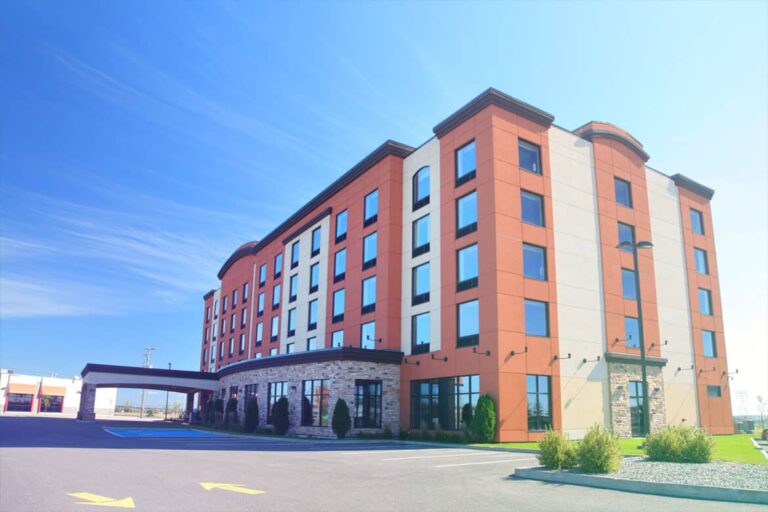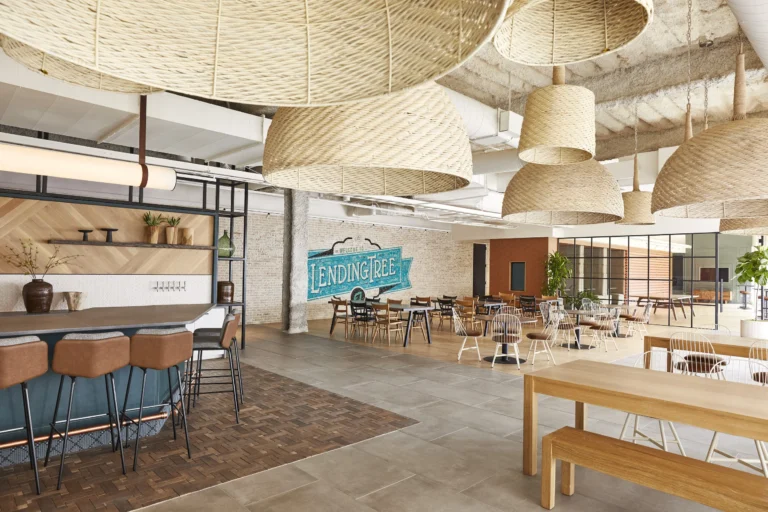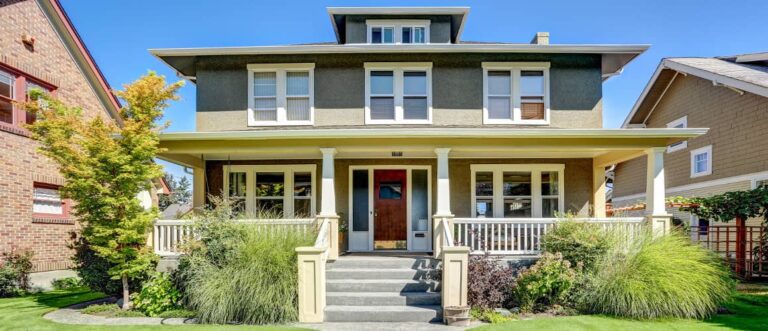Commercial Real Estate Loan A Complete Guide to Financing Income-Producing Property
When a business or investor needs to purchase, refinance, or develop an income-producing property rather than buy a residence, they typically turn to a commercial real estate loan. This type of financing is structured specifically for commercial property-such as offices, retail centres, industrial sites, multifamily rentals, mixed-use buildings-and is markedly different from a standard home mortgage. For example, lenders such as First Citizens Bank describe CRE loans as being used “to buy, build or improve income-producing property.
>Because the risk profile is higher (the property is income-producing, market dynamics matter, tenant occupancy, lease expiry, etc.), lenders impose stricter underwriting, often requiring more down payment, shorter amortisation, higher interest rates, and detailed business plans. Understanding the fundamentals of commercial real estate loans is critical for any investor or business owner looking to grow through property.
What constitutes a commercial real estate loan
These loans can fund a variety of scenarios:
-
Acquisition of commercial property (purchase of an office building, retail strip, warehouse)
-
Refinancing of an existing commercial property to improve cash flow or consolidate debt
-
Construction or renovation of commercial property (new build, major redevelopment)
Lenders like Byline Bank offer flexible CRE structures, including term loans, construction loans, bridge loans, and acquisition loans.
>Because the borrower is typically a business entity and the property must generate income (or be tied to business operations), the underwriting places emphasis on business health, property cash flow, location, tenant quality, and exit strategy (if applicable).
Why choosing the right loan matters
Selecting the proper commercial real estate loan can significantly impact your return on investment, cash flow, risk exposure, and long-term property strategy.
>For instance, choosing a loan with a very long amortisation period might lower monthly payments but raise total interest cost, whereas a shorter term may boost equity quicker but demand stronger cash flow. A mismatch between property strategy (e.g., value-add vs stabilised income) and loan type can undermine profitability. For example, in one lender’s product overview, they emphasise that their CRE loan team will “work with you to find the best strategies, plans and solutions” for your property.
In short: the right financing aligns with your property type, business model, risk tolerance, and exit plan. A misfit can erode profit, hamper flexibility, ty or increase risk of default.
Key Benefits of Commercial Real Estate Loans

Utilising a well-structured commercial real estate loan provides a number of strategic advantages for investors and business owners alike. Let’s explore them in detail.
Leverage your capital to accelerate growth.
One primary benefit is the ability to leverage borrowed capital to acquire or develop higher-value assets than you could using cash alone. For example, rather than tying up all your own capital in buying a commercial building outright, you can invest a portion as equity and use loan financing for the remainder, thereby preserving funds for other deals or renovations.
By properly leveraging, you can scale your property portfolio faster-adding multiple assets over time instead of just one. This magnification effect is central in commercial real estate investing.
Cash flow management and tax advantages
A commercial real estate loan allows you to structure payments in a way that supports positive monthly cash flow-rental income from tenants minus debt service and operating costs. With careful underwriting and good property selection, the loan can facilitate net income generation from day one or shortly thereafter.
>Additionally, owning commercial property via borrowed money enables tax advantages: you can often deduct interest expense, depreciation, property taxes, and certain operational costs. Lenders like U.S. Bank highlight tax advantages as a benefit of their CRE loan product.
Together, these benefits improve your return on equity and enable you to build wealth through real estate rather than simply buying a home.
Portfolio diversification and business expansion
For business owners, investing in property can diversify their asset base and create an additional income stream beyond their core business. A business-owner can purchase a building (for their operations or lease to others) with a commercial real estate loan. This helps shift part of their wealth into a tangible asset with potential value appreciation and rental income.
For investors, adding commercial real estate introduces diversification-property tends to behave differently from stocks and bonds. A mixed-asset portfolio (including CRE) may weather economic cycles more resiliently. Many banks emphasise tailored solutions to match owners or investors in property.
Five Real-World Commercial Real Estate Loan Products
Here are five concrete loan product examples from well-known lenders, including their features, use-cases, benefits, and how you can apply. Each describes a “product” in financing terms – essentially a borrowing solution for commercial property.
1. Bank of America Commercial Real Estate Loan

The product provided by Bank of America is aimed at small-to-medium businesses acquiring or refinancing commercial property. Bank of America
Details:
-
Available for purchase, refinance,ce, or use of equity.
-
Qualification example: minimum 2 years in business under current ownership, minimum $250,000 annual revenue.
-
Offers interest-rate discounts via the Preferred Rewards for Business program (-0.25 to -0.50%).
Use case: A business ready to expand its premises (buying a new building) or refinancing an existing investment property to improve cash flow.
>Why needed: If the business holds or plans to purchase income-generating property, this loan suits owner-occupant or investment property use where the property is integral to business operations.
>How to buy/apply: Applicants can visit the Bank of America site and begin an application for a commercial real estate loan.
Benefit (specific): The ability to access lower rates (via rewards membership) and the flexibility to use the loan to buy, refinance, or tap equity make it a versatile choice for business-owners seeking property as part of their growth strategy.
2. U.S. Bank Commercial Real Estate Loan
The loan product from U.S. Bank is tailored for business expansion, property purchase, or remodel of existing commercial real estate. usbank.com
Details:
-
Term lengths of 5, 10, or 15 years with amortisations up to 25 years.
-
Max loan-to-value up to about 80% for owner-occupied commercial real estate.
-
Competitive interest rates and dedicated loan professionals.
>Use case: A growing business needs to purchase its own facility, ty or a developer wants to acquire an investment property for rental income.
Why needed: The structured terms suit both owner-operated properties (occupying >51% of the space) and investment properties, providing flexibility.
How to buy/apply: Access the U.S. Bank website at the commercial real estate loan section.
Benefit (specific): The flexible loan terms and high LTV allow borrowers to retain more equity and maintain capital for other growth initiatives, while still leveraging property acquisition.
3. Byline Bank Flexible CRE Structures
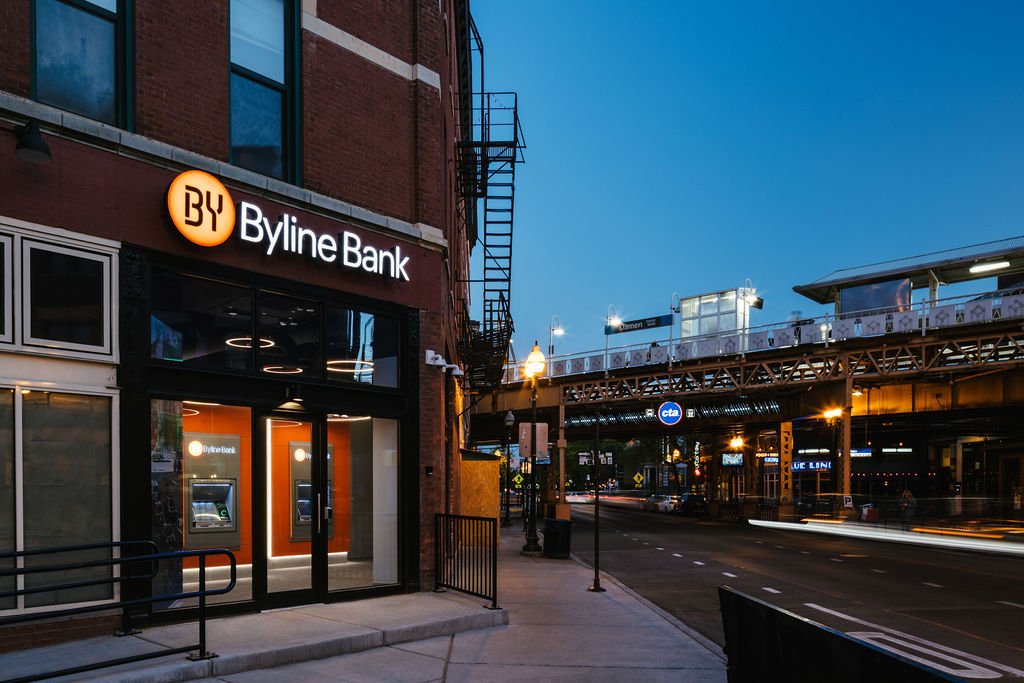
Byline Bank offers commercial real estate financing for middle-market transactions, including term, construction, bridge, and acquisition loans. Byline Bank
Details:
-
Term loans, construction loans, bridge lending, and acquisition loans are offered.
-
Solutions for value-add projects that need repositioning, new leasing, or redevelopment.
Use case: A real-estate investor acquiring a property that needs renovation and repositioning before income stabilises.
Why needed: Standard financing may not accommodate complex value-add or bridge situations; this product supports such scenarios.
How to buy/apply: Contact Byline Bank’s commercial real estate lending team via their website.
Benefit (specific): Enables investors and developers to take on more challenging properties (versus simple acquisitions) with financing structured specifically for construction or repositioning risk.
4. Texas First Bank Commercial Real Estate Loans
Texas First Bank lists CRE loan options to purchase, refinance, or construct commercial properties with flexible terms and local decision-making.
Details:
-
Offers low monthly payments, flexible down payments, and terms up to 25 years for owner-occupied and investment properties.
-
Covers a wide variety of commercial needs-from shopping centres to office buildings.
>Use case: A regional business expands into purchasing its own facility, or an investor buys a small retail centre in a local market.
Why needed: The local bank’s flexibility and decision-making can speed up transactions, making it favourable in competitive markets.
How to buy/apply: Reach out via Texas First Bank’s website. Example button: Apply with Texas First Bank
Benefit (specific): The combination of flexible down payment and local underwriting helps borrowers with less conventional credentials or those prioritising speed and relationship banking.
5. Columbia Bank Income Property & Structured Financing
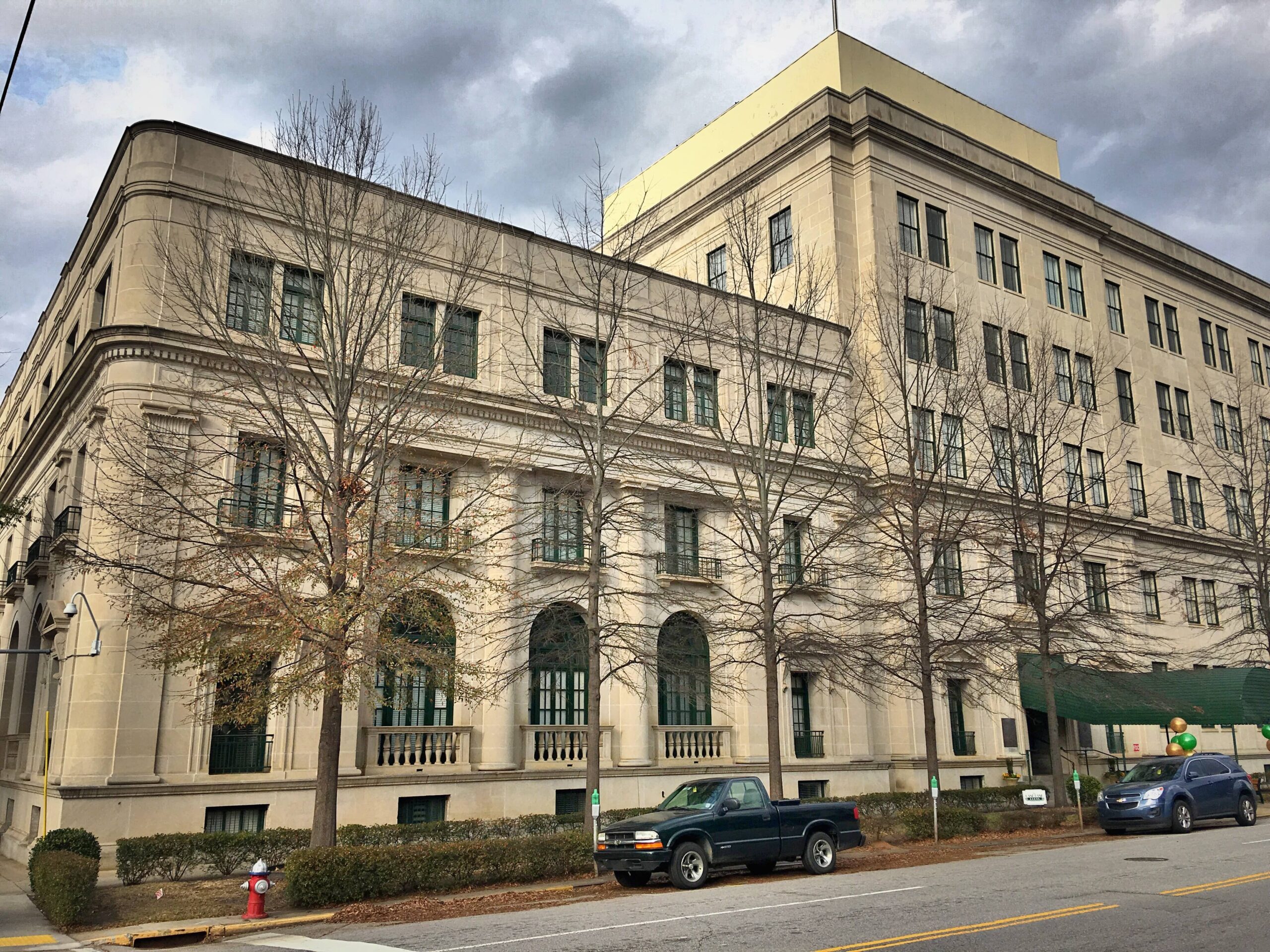
Columbia Bank (via its Income Property Banking unit) promotes financing for multi-family, industrial, self-storage, mixed-use, and other commercial property types, plus construction and bridge loans. PPBI
Details:
-
Customized permanent financing solutions for multi-family and other income property types.
-
Construction, bridge/rehabilitation, and specialty financing available.
>Use case: An investor purchases a 79-unit apartment building for refinance, or a developer needs a bridge loan to reposition an industrial park.
>Why needed: Larger, more sophisticated property types require lenders with dedicated expertise; this product caters to those scenarios.
>How to buy/apply: Contact Columbia Bank’s Income Property Banking team.
>Benefit (specific): Provides access to capital for larger-scale property transactions with potentially long-term stable cash flow – ideal for serious commercial real-estate investors.
How to Choose & Apply for a Commercial Real Estate Loan
Step 1: Clarify property and investment strategy
Begin by defining what the property will be used for (purchase, construction, refinance), the type of asset (office, retail, industrial, multifamily), the business model (owner-occupant vs pure investment), anticipated cash flow, and term horizon. For example, if you plan to hold long-term for rental income, you may prefer a longer amortisation period and a term matching that horizon.
>Next, assess your own financial profile: business track record (years in operation, revenue), credit profile, available equity or down payment, property equity, and cash reserves. Many lenders require proof of revenue, business longevity, property value, and exit strategy.
Step 2: Compare loan features, terms, and costs
Key features to compare include interest rate (fixed vs variable), amortisation length, term length, loan-to-value ratio (LTV), down payment requirement, prepayment penalties, draw structure (especially if construction), and any fees or origination costs.
For example, U.S. Bank’s loan offers up to 80% LTV for owner-occupied commercial properties and terms of 5, 10, or 15 years.
Balance cost vs flexibility based on your property’s risk and your exit plan.
Step 3: Prepare documentation and apply
Gather key documents: business financial statements, tax returns, property income statements (for investment properties), purchase contract or appraisal, business plan or rehab plan, personal financial statement, credit report, legal entity documentation if property held by LLC or corporation.
Then submit applications to multiple lenders (at least 2-3) to compare offers. A strong offer with fast closing may win in a competitive deal environment. Ensure you negotiate terms-origination fees, interest rate, balloon payments, amortisation.
Use-Cases: What Problems This Loan Solves & Why You Need It
Use-Case 1: Business owner purchasing own facility
A manufacturing company has grown rapidly and needs a custom warehouse/office space.
Problem solved: Leases rising, no asset accumulation. By buying via a CRE loan, you secure a oclocationbuild equity, and stabilise costs.
Use-Case 2: Investor buying an income-producing property
An investor identifies a retail strip centre with multiple tenants, wants to acquire it, and collect rental income. They use a commercial real estate loan tailored for investment properties.
>Problem solved: Unable to buy outright with cash, need financing that accommodates investment property rather than a residential mortgage.
Use-Case 3: Developer repositioning a value-add property
A developer buys an older industrial building, plans to renovate, re-tenant, and reposition it.
>Problem solved: Traditional owner-occupant loans won’t cover value-add risk; need specialized financing with flexible draws and shorter term.
Benefits of Technology-Enabled Financing Platforms
Modern commercial real estate lending often incorporates technology-driven platforms: digital applications, online document submission, real-time pricing, automated underwriting engines, and loan dashboards. These systems expedite approvals and improve transparency.
Risks and What to Watch Out For
While commercial real estate loans offer strong advantages, they also carry risks that must be managed:
-
Higher interest rates and shorter terms relative to residential mortgages. Borrowers should ensure the income from the property supports debt service comfortably.
-
Property market risk: occupancy rates, tenant credit quality, lease expirations, and neighbourhood changes all impact cash flow and value.
-
Construction or repositioning risk: projects can face delays or cost overruns, which increase carrying costs and reduce profitability. Loans structured for these must have buffers.
Frequently Asked Questions (FAQ)
Q1: What is the typical down payment or equity requirement for a commercial real estate loan?
A1: Equity or down payment requirements vary widely by lender and property type, but generally range from 20% to 30% (sometimes more) of the property’s value for investment properties. Owner-occupied CRE loans may allow slightly lower equity if business metrics are strong and the property is core to operations.
Q2: How long are commercial real estate loan terms and amortisation schedules?
A2: Terms for commercial real estate loans often range from 5 to 20 years with amortisation up to 25 years, depending on lender and property type. For example, U.S. Bank offers terms of 5, 1,0 or 15 years with amortisation up to 25 years.
Q3: Can I use a commercial real estate loan for a mixed-use or multi-family property?
A3: Yes-many lenders will finance mixed-use or multi-family properties under the commercial real estate loan umbrella, especially if the property is income-producing. For example, Columbia Bank explicitly lists multi-family, industrial, self-storage, and mixed-use among the property types they finance. It’s important to check with the lender regarding occupant types, lease structure, property classification, and credit underwriting criteria.

